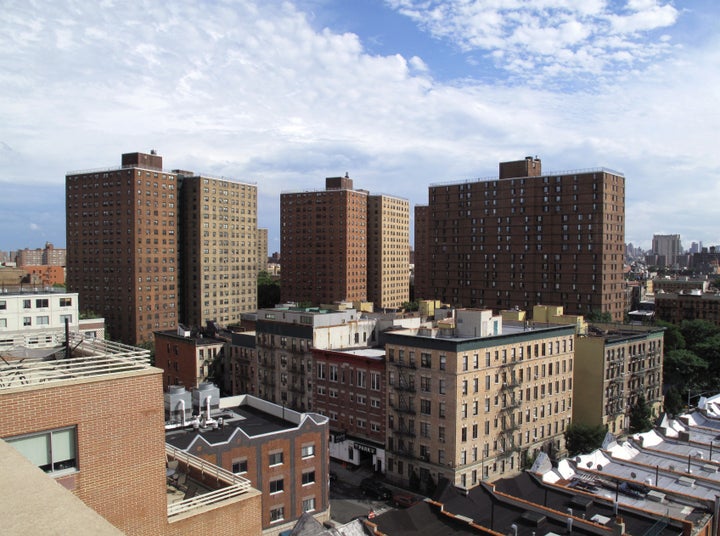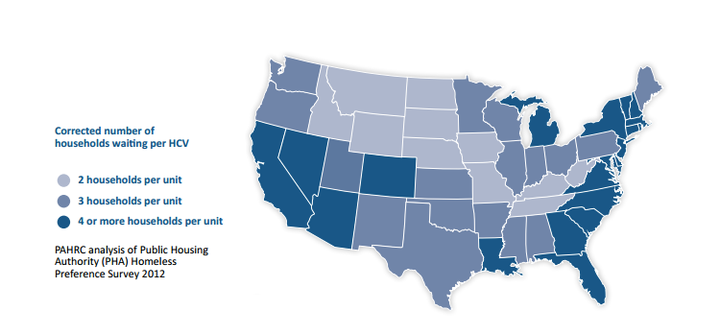
Federal programs provide homes for about 5 million families nationwide, but that’s only a fraction of the people who are trying to receive assistance, according to a report released Thursday.
For the report, researchers at Public and Affordable Housing Research Corporation looked at a study about homelessness among public housing applicants published in 2014 by the U.S. Department of Housing and Urban Development. PAHRC research manager Keely Stater zeroed in on a startling figure: In 2012, 2.76 million families were on waiting lists for housing choice vouchers, a federal program that covers a portion of recipients' rents in privately owned affordable housing.
But close to half of local housing agencies, struggling with shrinking resources and a finite number of vouchers, had closed their waiting lists when the data was collected, meaning families that wanted to apply for affordable housing couldn’t. Stater wanted to determine how many families were actually trying to get assistance, whether waiting on an official list or off it.
In their analysis of the HUD data, researchers used statistical models to estimate that 9.5 million households would be on waiting lists for housing vouchers if there were no caps -- more than three times the official total. Their estimates only include those they predict would apply if waiting lists were open; there are more eligible families who don't seek housing assistance and were not included.
The revised, larger figure underscores the need for an expansion of affordable housing programs, Stater said. In some states, there are more than four families waiting for each available housing voucher.

It's clear how far the programs fall short when you look at what happens when agencies reopen their closed waiting lists. When the Detroit Housing Commission -- which serves several Michigan counties -- opened its waiting list last year, 40,000 people applied. DHC added 7,000 applicants to the waiting list, chosen by lottery, leaving another 33,000 out of luck.
Chicago opened its waiting lists in 2014 for the first time in over four years. More than 280,000 people registered and only 96,000 were added.
Once a family makes it onto a list, there’s no guarantee that they’ll get assistance anytime soon. Waiting list size and turnover vary, but in some places, applicants who make it on the list end up stuck for years.

In 2013, The New York Times talked to Maria Almonte, one of over 200,000 people on the New York City Housing Authority’s waiting list for public housing. She applied in 2009.
“Every time I call, they don’t say anything,” Almonte told the paper. “They say, ‘You’re on the waiting list, you’re on the waiting list.' Sometimes I feel such anxiety because of the uncertainty.”
New York City has one of the most robust sets of housing assistance programs, but also has some of the highest need. According to PAHRC’s estimates, there are more than five families seeking vouchers for each one available in New York County.
Families who haven’t yet succeeded in getting housing assistance cope in a variety of ways, Stater said. Some spend more of their income on rent than they can afford, others might share space with other tenants or stay with relatives and some people are homeless.
“There's a lot more people waiting than we previously thought. … It’s pretty astounding to me,” she said. “This is a great way to demonstrate that we need more resources for housing across the nation.”

